![]()
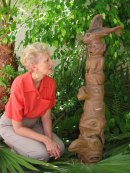

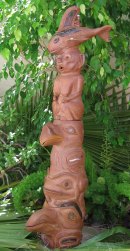
Click for a larger image.

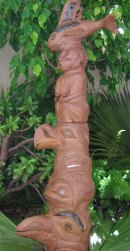

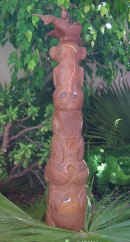
Click for a larger image.

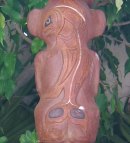

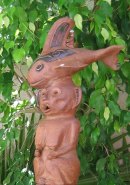
Click for a larger image.



Click for a larger image.

Teacher's Guide for
The Forest Lover
This page contains:
Suggested Scenes for Reading Aloud
Topics for Class Discussion
Collaborative Research Projects
A Collaborative Creative Project
Individual Research and Creative Projects
Topics of Personal Inquiry
Literary Examination Topics
Teachers and students are encouraged to make use of the
Book Group Discussion Questions,
Map,
First Nations Cultures and Totem Poles,
and
Bibliography
on this website. Teachers are invited to download this page, and to send any additional topics or projects they devise to
Susan Vreeland
for posting here.
Because emphasis is often placed on having students relate a piece of literature to themselves, to the world as they know it, and to other pieces of literature, topics and activities that fulfill these functions are marked as follows:
T-S -- Text to Self
T-W -- Text to the World
T-T -- Text to Text
Suggested Scenes for Reading Aloud:
1. Emily's first encounter with native coffin trees, p. 12-15
2. Argument with sisters, and recollection of childhood, p. 24-9
3. Native funeral of Sophie's son Tommy, p. 62-68
4. Emily's first encounter with Dzunukwa, p. 162
5. Painting Dzunukwa, p. 165-6
6. Provincial Police raid on Kwakiutl potlatch, p. 173-177
7. Decimation of the Haida, and ruin of their art, p. 210-212
8. Death of Emily's dog, Billy, p. 241-246
9. Passages from Harold's autobiography, pp. 256-258, 272, 273
10. Argument with priest, p. 303-5
11. Emily's private consummation in the wilderness, p. 310-11
12. Emily's final monologue and spirit song in the style of Walt Whitman, p. 327-8
Topics for Class Discussion:
See bottom of page for significance of underlines.
1. Emily is a complexity of contraries. Is she resilient or easily defeated? Loving or unloving? Rash or thoughtful? Intolerant or compassionate? Frigid or passionate? Prideful or humble? * Analyze the conditions or situations bring out each of these qualities in her.
2. What particular qualities and experiences did Emily have that supported her desires, and what qualities and experiences worked against those desires?
3. One of Carr's painting teachers in France, Harry Phelan Gibb, tells Emily that she needs to paint out of her soul. Interpret what this might mean, and decide if she ever achieves it. What does she have to do first? Is there a connection between intuitive painting coming from one's soul or instincts, and technical painting coming from the application of aesthetic principles? Are they entirely contrary or can they be reconciled? If so, how? How does this dichotomy of artistic approaches apply to other arts?
4. The Chinook word that means "land that gives comfort" is "illahee," which Harold longs for. Why are Kispiox and the surrounding villages so terribly important to him?
5. Decide whether love of place can substitute for love of the more conventional sort. For what kind of person would it suffice?
6. Explain how Emily Carr's art was influenced by the First Nations people of British Columbia. What prompted her to go to Native villages to paint in the first place, and what did she gain by doing so?
7. How did colonial mentality and dominance of religion influence the relation of Emily with her sisters, and the two tragedies in the book? (T-W)
8. Speculate on all the implications of the book's title, and of chapter titles. What is accomplished by the author naming the chapters?
9. Ultimately, what is Emily's spirit song? Speculate what might be the words or refrain of it. What might have been the words to Sophie's?
10. How does the Nuu'chah'nulth (Nootka) philosophy expressed in Lulu's phrase, hishuk ts'awaak, play out in the novel? Identify physical concrete signs of it as well as mental ones. To what extent does Emily come to see this philosophy to be true?
11. Assess whether it is appropriate or acceptable for a non-Native individual to represent First Nations people and their culture and lives in art, both visual and literary. Is it only acceptable for an artist and writer to portray what they themselves have directly experienced? If so, did Carr directly experience what she painted? How deeply? Evaluate the handling of First Nations cultures in The Forest Lover.
Collaborative Research Projects:
Divide the class into groups and assign each one a research task. Start with the links and bibliography on this site. Feel free to download the bibliography. Arrange library and computer terminal time for the class. Each group then prepares a presentation giving the results of its discoveries.
1. Examine the totem pole as a cultural expression. What is its purpose? What does it reveal about the societies which carved and erected them? What are the different kinds of totemic figures in Northwest Coast cultures from Alaska through British Columbia to Washington? What other totemic figures exist in other cultures? (T-W)
2. Using this website as well as the two listed below, compare Emily's paintings of totem poles from before her exhibit in the east with those she did after. How do they show her growth? Describe the stages or periods in her artistic development. Use books as well as the images on all pages of this website, paying attention to the dates.
http://collections.ic.gc.ca/EmilyCarrHomeWork/gallery/gallmain.htm
http://collections.ic.gc.ca/totems/contents.htm
3. Compare the US government's treatment of Native Americans to the Canadian government's treatment of Native Canadians. What similarities do you find? Discover specific historic examples with details, dates, places, events. Include in your consideration the education of young people in government sponsored residential schools run by missionaries. (T-W)
4. Read Vreeland's other novel about a female painter, The Passion of Artemisia. What obstacles to full creative expression did each of these women face? How did each handle the issue of marriage as it applies to her art? Compare the similarities and distinguish the differences in Artemisia's and Emily's natures and in the obstacles both of them experienced in striving toward their goal of the full development of their art. If they were to have a conversation across time, what issues would they discuss? How would they feel about the other person's work? Compose the dialogue for such a hypothetical discussion. (T-T)
5. Select another female artist and do a comparison of her life, her attitudes, her cultural climate, her time in history and in art history, her artistic themes, and her style to Emily's in all these categories. (T-W)
Here are some women to consider, but there are more:
- Georgia O'Keeffe, American, takes up natural themes in the Southwest; labeled by critics as a shameless nymphomaniac
- Frida Kahlo, Mexican, wife of Diego Rivera, yes the same person as in the recent movie, Frida; horrible life-long suffering--look at any of her paintings and you'll see it
- Mary Cassatt, American Impressionist, considered oh-so-feminine; painted themes of motherhood
- Berthe Morisot, French Impressionist, central to Impressionist movement--was she in love with Degas?
- Judith Leyster, Dutch Renaissance painter who eclipsed her famous teacher but died an unknown
- Suzanne Valadon, self-taught French Modernist, bohemian and rebel
- Hildegard von Bingen, German medieval illuminator of manuscripts, nun, and advisor to monarchs
- Angelica Hauffmann, 18th century Swiss who played hardball with the big boys
- Elisabeth Vigée-Le Brun, court painter to Marie Antoinette, a dangerous liaison
- Camille Claudel, French; lover, model, and student of Rodin; sex, lies, sculpture, madness, tragedy, and despair
- Käthe Kollwitz, German, caught in Nazi political crossfire; felt all art is political
You might find The Guerrilla Girls Bedside Companion to the History of Western Art, to be enlightening as well as an amusing, wisecracking romp. Author: The Guerrilla Girls, (they are unknown, which is to say, they keep their identities secret). Publisher: Penguin, 1998 [ISBN: 0-14-02.5997x]. They ask: Why haven't more women been considered great artists throughout Western history? Why do we always have to be called "women artists"? They don't call Rembrandt and van Gogh "male artists." Why does being African American and female make it twice as hard for my work to be remembered? Beware: the Guerrilla Girls make trouble!
A Collaborative Creative Project:
In groups of five or six, have each group construct a traditional stacked totem pole using one figure for each student which represents himself. (T-S) Group decisions must include: medium (paper, cardboard, clay, wood--balsa wood is obtainable at hobby shops and is easily cut and carved--paint, crayon or colored pencil). If it is three-dimensional, it must be self standing. If it is two dimensional, the front and back views must be shown separately, with the back providing some interest as well as the front. Dimensions, degree of taper, order and integration of figures (overlap or connection between figures as the Haida poles do -- see Chapter Ten of The Forest Lover) must be harmoniously decided by consensus of the group.
[Note on the image: The totem pole pictured here is of stoneware which I made in 1996 while teaching literature and ceramics. Each figure was thrown on the potter's wheel and then altered, carved, and small portions glazed. Reading from the bottom up, the figures are Eagle, Frog, Raven, Dzunukwa, Killerwhale with the legendary sculptor, Natsilane, riding on Killerwhale's back.]
Individual Research and Creative Projects:
1. Use a painting by Carr to spark a poem. Start by surveying, the paintings on this site. Don't try to narrate the meaning of a totem or scene the way Emily might have seen it. Just respond from your own well of experience to the shapes, colors, setting, the feel of the subject. Link the questions below to the paintings as you go through the two sections: Emily Who, and Paintings and Passages. Don't feel you need to write a direct answer to the question in a poem. Just let one of the following questions (or one you pose) together with an image suggest a line of thinking, and follow it. (The questions are roughly in the order that the paintings appear on the website. Many of them involve T-S, Text to Self considerations.)
- What land's edge am I living on or in? In what colors, other than the natural or obvious, do I imagine this dwelling place?
- Where does the path in the forest lead? What path am I beginning to see ahead of me? Should I follow when I don't know where it's going?
- What might it feel like to live in a house dwarfed by the forest? What looms over my house, or the row of houses on my block, that is, my neighborhood? What protects me?
- What strange or hideous creature is reaching out her/his arms to me? Should I run toward it or away?
- Why is the parent holding the child outward? Would I rather be the parent or the child?
- What does it mean for a bird to be stuck in the earth? What would it feel like? What might it be similar to in the realm of humans?
- What religious symbol is in my wilderness? What feeling does it create in my private self?
- What would make a person weep so much that his eyes would be washed out of his face? How have you responded when you've seen someone cry this much?
- What pillar of strength and growth can I claim in my wilderness?
- What does it mean when the sky vibrates in waves? Under what personal circumstances might the sky seem to be doing this? When have I felt some natural phenomenon respond to my state of thinking or feeling?
- How does a single remaining tree feel when all his life-long companion trees are hewn down by loggers? How might this translate into the human realm? What are the benefits of being alone?
2. Most cultures have mythic figures that serve as bringers of good or evil (such as Dzunukwa, for example), tricksters, creators. People need ways to explain bad things that happen, ways to give gratitude, ways to explain creation and the origin of man. In Native Northwest Coast cultures, Raven is a trickster and can change into other creatures to play tricks or do evil. Perhaps this suggests why it's difficult to identify and eliminate evil because its identity is masked or elusive. In the Native cultures of the American Southwest, there are the mythic figures of Coyote who functions in ways similar to Raven, and Kokopelli, the flute player. And of course the Greeks, Romans, and Norse have a large pantheon of gods and goddesses. Select a culture that you identify with or appreciate (it need not be your own ethnic heritage, but it can be), and either narrate a story or folk tale in which an authentic mythic figure takes part, or invent such a figure that would be representative of the geographic locale and the social, religious, or cultural climate of that place. (T-W)
As the creative adjunct to the mythic figures work above, students can construct masks using a variety of media (clay, paper, cardboard, fabric, stuffed fabric, feathers, leaves and branches, shells, beads, false hair) of the mythic figure they wrote about, or one from The Forest Lover. And further, students can create a piece of jewelry of that mythic figure.
Topics of Personal Inquiry:
1. If you were to choose an animal or an element of nature as an expression of yourself, what would it be? Why do you identify with this creature or thing? (T-S)
2. Write the words to a power song as a gift to someone else in the class so that this song would empower that person.
3. The Forest Lover includes many descriptions of Emily's thoughts as she's composing a painting. Find half a dozen of them and study them. After viewing Carr's work on this site and the sites listed below, select one painting which is your favorite. Download it and print it out. Write a detailed description of it and explain what you think Emily was thinking about this scene. You may write this in third person, as if from the outside, or first person, getting inside Emily's head. Conclude with why this painting appeals to you.
http://collections.ic.gc.ca/EmilyCarrHomeWork/gallery/gallmain.htm
http://collections.ic.gc.ca/totems/contents.htm
4. Of all the places on the planet, do you have an illahee, a place that gives you comfort? Describe it in poetry, prose, narrative, or song. Include at least three details of sensory experience, and have at least one detail be kinetic (moving or changeable). Infuse the description with your feelings, whether you choose to use first or third person. Do not use "I like this place because..."
5. Select someone you think of as a hailat. This person can be known to you or not, living or dead. Do some research about this person and his or her art. Compose a narrative in which this person is working at his art or craft. Get inside the person's head and reveal his or her feelings and considerations as he or she approaches, designs and executes the task. In terms of painting, two approaches exist: intuitive painting coming from one's soul or instincts, and technical painting coming from the application of aesthetic principles. Which of these two approaches does your hailat typically use? Or which does he or she use just in particular stages in the creative process? Find a photograph or take a photograph of this person, if possible a shot with your hailat engaged in the creative act. Teachers: either have students read their results aloud to the class, or have the photographs and written material posted around the classroom, and have students circulate to read each one.
Literary Examination Topics:
Some of the questions listed above, "Questions for Discussion," as well as the "Book Group Discussion Questions" are suitable topics for papers of literary analysis. In addition, here are some more involved ones.
1. Much of a novel involves the interaction between characters and the dynamics operating in pairs or triads of people. Analyze how Emily affects Alice, and vice versa, as a pair. How does the triad of Alice, Lizzie, and Emily operate? How does Emily affect Dede, Jessica, Sophie, and Harold? And how do these characters affect Emily? Assess how these dynamics change throughout the course of the novel covering more than two decades.
2. Claude du Bois insisted on calling Emily Madame Courageuse. Why? What did he see in her, which is to say, what qualities did he see in her and why was he attracted to her? Given her life experience up to that time, in what way was she courageous with him? How was she courageous throughout her life? Analyze what type of courage her desires and circumstances demanded? Conclude your analysis with an examination of the relation of courage to desire.
3. Voice for a fictional character consists of lexicon (a person's range of vocabulary), typical or repeated expressions, degree of formality or informality, length of sentences, use of sentence fragments or full sentences. Emily speaks in several different voices, both in interior monologue and in actual conversation. Describe them, and identify examples. Read examples aloud to the class. Infer why she speaks this way at each particular moment. Compose a new scene in which you demonstrate one of these voices.
4. Part of literary study involves the tracing of literary influences. Examine all of the references to Whitman and Leaves of Grass, which includes "Song of Myself," in The Forest Lover. Why do you think Emily was so attracted to this poet? In Chapter Twenty-nine, Emily reads a passage from Whitman's Leaves of Grass to Jessica which begins, "The masters know the earth's words and use them more than audible words." How does Emily absorb this and apply it? What other expressions of Whitman's philosophy take root and grow in Emily's thinking? In Harold's? When do we hear Emily's voice as influenced by Whitman's? Find in Leaves of Grass some passage not appearing in The Forest Lover that would have appealed to Emily. Explain why she would have liked it. (T-T)
5. A classical definition of tragedy includes these elements: The tragic hero/heroine is a person with high social status, much respected. He or she has many fine qualities, but his/her character is marred by a tragic flaw which brings about his or her ultimate downfall. Often that downfall occurs at the apogee of the person's life. As a result of coming so close to the desired achievement or outcome yet failing, the reader (or audience, if the work is a play) experiences a cathartic feeling mixing upliftment and disappointment. How does each of these elements play out in Sophie's life?
* Since Bloom's Taxonomy ranking thinking skills often informs curriculum, those directives of the taxonomy used in this guide are underlined. Skills from the following categories are involved in the discussion and writing cues and activities:
Level 1: Knowledge (recall of information): tell, narrate, list, define, describe, identify, show, examine, quote, locate
Level 2: Comprehension (understanding meanings): summarize, describe, interpret, contrast, predict, speculate, associate, distinguish, extend
Level 3: Application (using what has been learned): apply, demonstrate, illustrate, examine, relate, discover
Level 4: Analysis (recognition of nuances of meaning): analyze, explain, compare, select, interpret, infer
Level 5: Synthesis (draw conclusions and create new ideas): design, create, invent, what if?, compose, formulate
Level 6: Evaluation (assessing value and making choices): make choices, assess, support, defend, convince, conclude, compare, judge
susan@svreeland.com